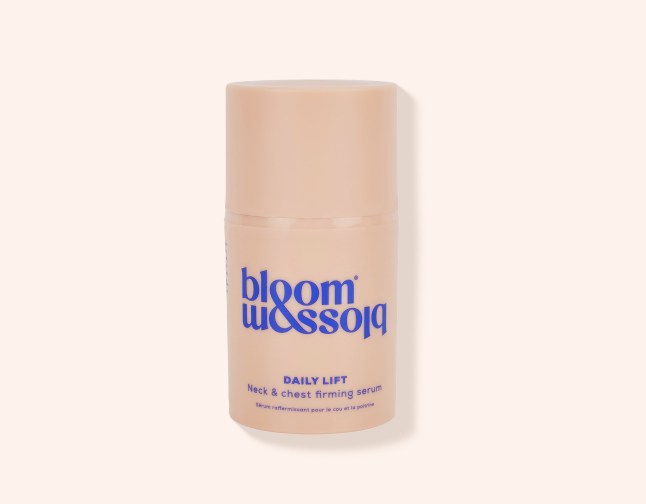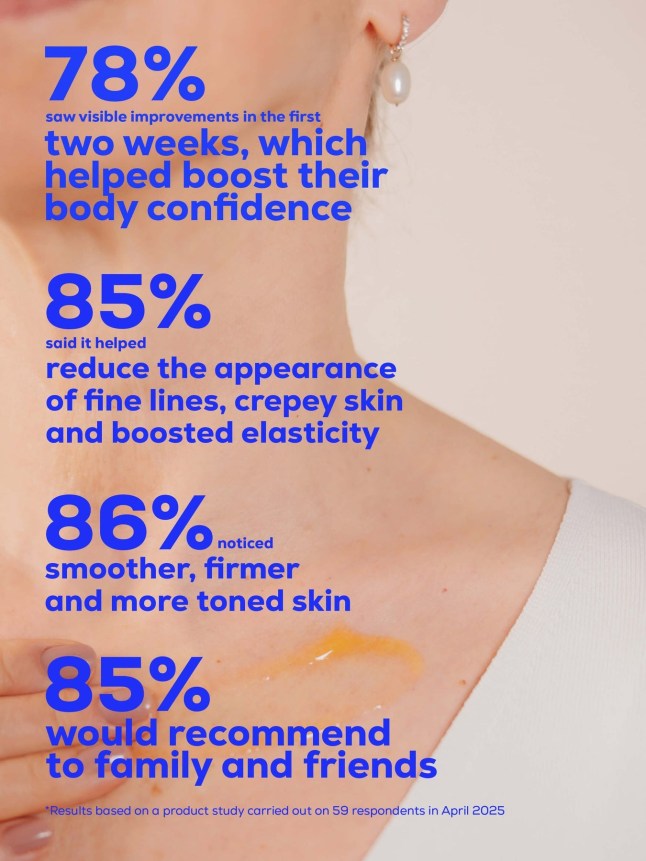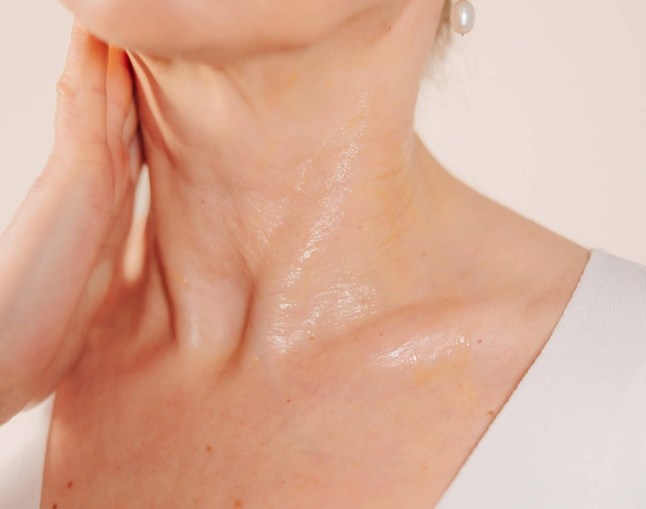11 Nov, 2025 | Admin | No Comments
Amal Clooney rewears red hot jumpsuit from 6 years ago – and looks better than ever

George Clooney’s wife Amal Clooney stunned in a red hot jumpsuit that she previously wore to Meghan Markle’s New York baby shower while appearing at the Prix Suisse event in Bern, Switzerland.
11 Nov, 2025 | Admin | No Comments
Martin Clunes’ ‘demanding’ lifestyle in West Dorset that keeps him on his toes
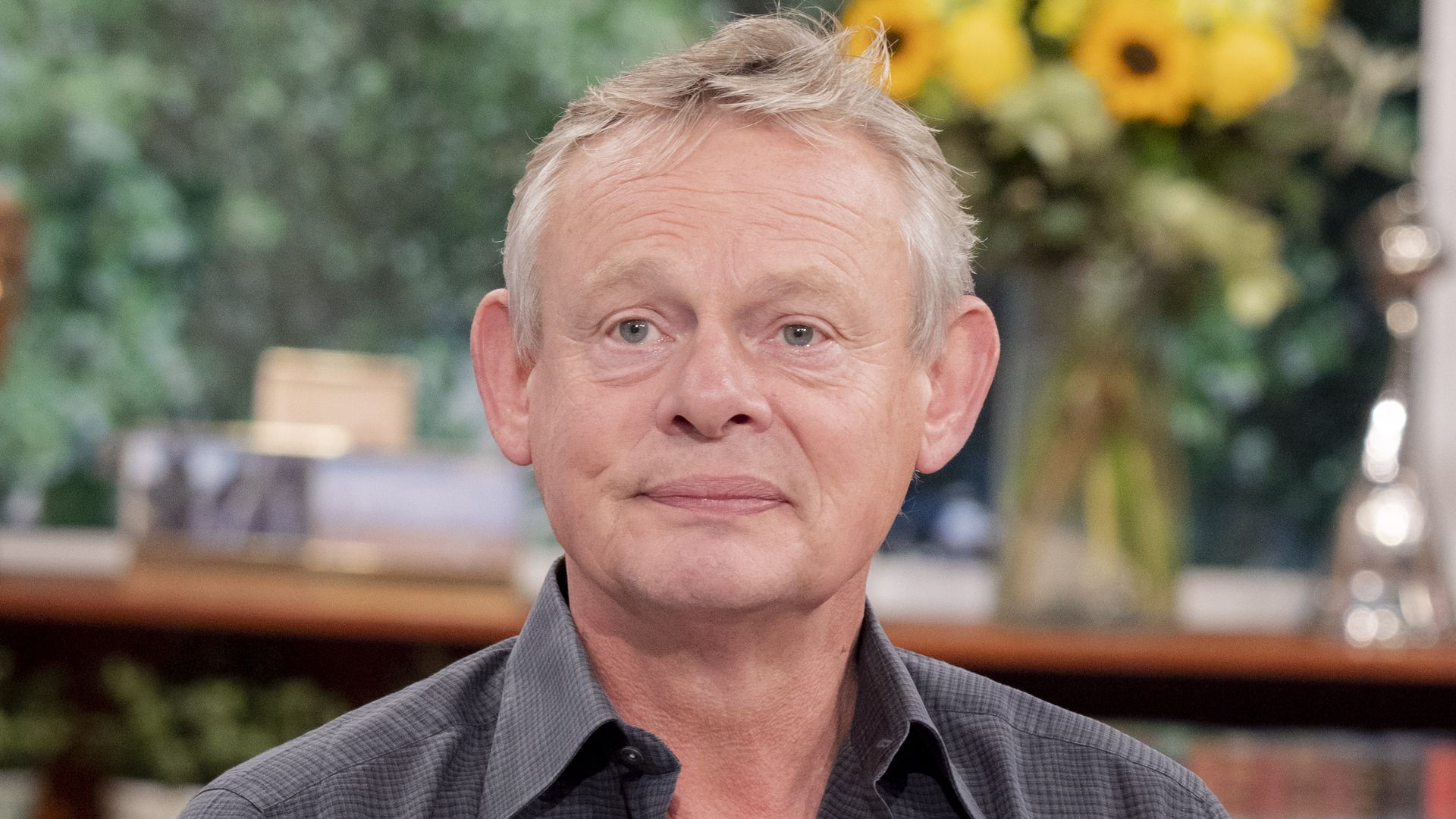
Doc Martin and Men Behaving Badly star Martin Clunes’ ‘demanding’ lifestyle in West Dorset that keeps him fit at 63.
11 Nov, 2025 | Admin | No Comments
Lovehoney’s Black Friday sale has arrived – save up to 70% on toys, lingerie and more
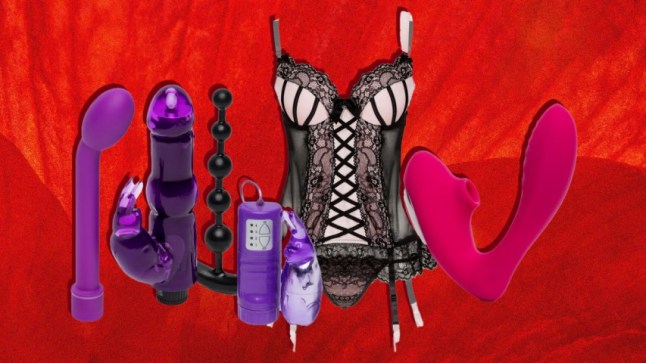
Metro journalists select and curate the products that feature on our site. If you make a purchase via links on this page we will earn commission – learn more
The very naughty Lovehoney Black Friday sale has landed and it’s everything your bedroom has been waiting for.
Whether you’re celebrating singles day or getting freaky with a partner, with up to 70% off across lingerie, sex toys and more, there’s never been a better excuse to indulge yourself.
And reader, Lovehoney really has it all. With savings across everything from vibrators to lingerie, couples’ kits to bondage essentials, there are plenty of sizzling savings up for grabs.
Better still, with Christmas just around the corner, these deals make it the perfect time to pick up sexy gifts that will get pulses racing.
Whether it’s a cheeky stocking filler, a vibrator offering ‘guaranteed orgasms’, or a stunning lingerie set that’ll look perfect on your floor, these deals mean you can treat your loved ones (and yourself!) without breaking the bank.
But you’ll have to be quick – stock is limited and the clock is ticking, these offers aren’t likely to hang around for long.
The Lovehoney Black Friday sale is your chance to stock up, save big, and add a little naughty to the countdown to Christmas.
This year, make your festive season unforgettable – one irresistible deal at a time. Have a peep below at our top picks from the sale.
Lovehoney Black Friday 2025 – top deals
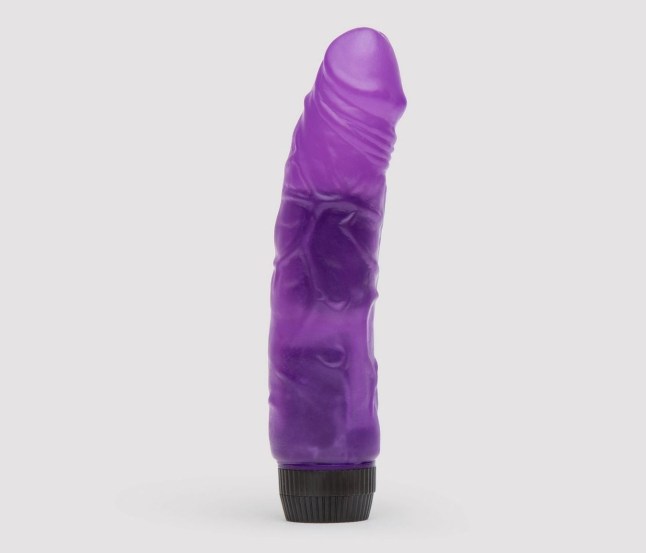
Basics Classic Realistic Dildo Vibrator 6.5inch
Lovehoney’s Basics Classic Realistic Dildo Vibrator 6.5 Inch gives you a realistic feel with a veiny shaft and defined head for super life-like stimulation. The slightly curved shape naturally targets the G-spot, while multispeed vibrations let you customise your experience from a gentle flutter to a stronger buzz. With a twist-base control for smooth, simple adjustments throughout use, this classic design is a reliable bedroom staple.

Lovehoney Boudoir Belle Blush Pink Push-Up Basque Set
Turn up the romance with the Lovehoney Boudoir Belle Blush Pink Push-Up Basque Set. Flirty blush pink microfibre and delicate black lace with subtle boning give this bodice a flattering hourglass silhouette and the underwired, moulded cups give lift to your bust. It has an adjustable hook-and-eye back that lets you find the perfect fit, plus a matching G-string as well as four removable suspender straps so you can style it with your favourite stockings.
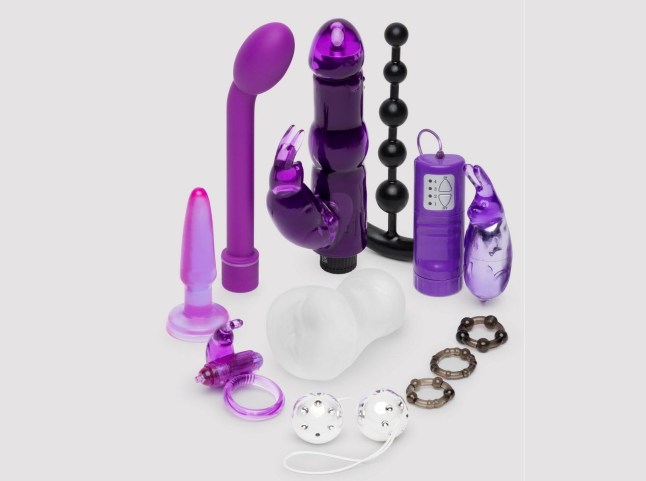
Lovehoney Wild Weekend Mega Couple's Sex Toy Kit (11 Piece)
Bring endless fun to the bedroom with the Lovehoney Wild Weekend Mega Couple's Sex Toy Kit (11 Piece), featuring 11 specially selected toys including a rabbit vibrator, butt plug, G-spot stimulator, cock rings, jiggle balls, and a male stroker. Multi-speed vibrations, teasing beads, and ergonomic designs make every combination exciting, while water-based lube enhances every moment for couples looking to explore, experiment, and add variety to their nights together.
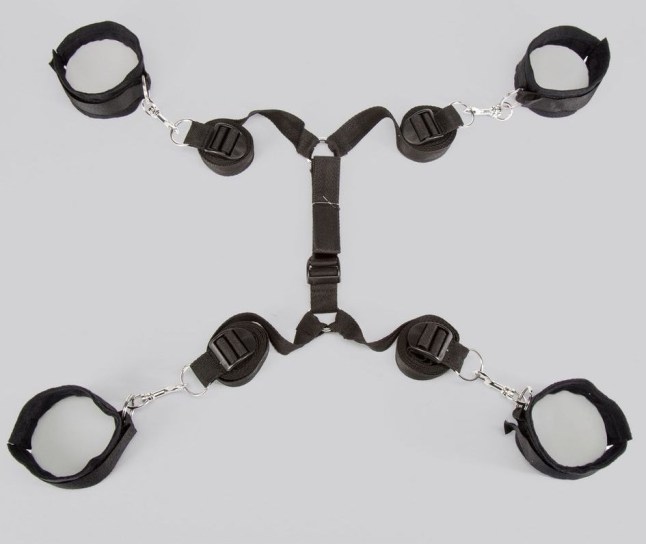
Bondage Boutique Bound to Please Under-Mattress Restraints
The Bondage Boutique Bound to Please Under-Mattress Restraints are designed to fit securely under your mattress, transforming your bed into a complete restraint system without any permanent fixtures. Fully adjustable Velcro cuffs ensure a comfortable and secure fit, but have quick-release connections if needed, allowing you to focus entirely on the experience.
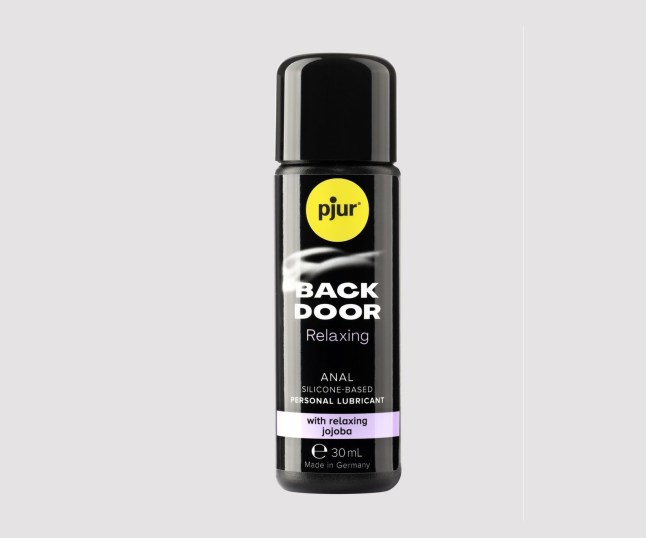
pjur Back Door Relaxing Anal Glide Lubricant 30ml
The pjur Back Door Relaxing Anal Glide Lubricant 30ml is a travel-sized silicone lubricant designed to make anal play smoother and more comfortable. Formulated with jojoba extracts, it helps relax the sphincter for easier, fuss-free fun, while its long-lasting formula ensures lasting glide. Safe to use with condoms and non-silicone toys, it’s the perfect companion for enjoyable anal experiences.
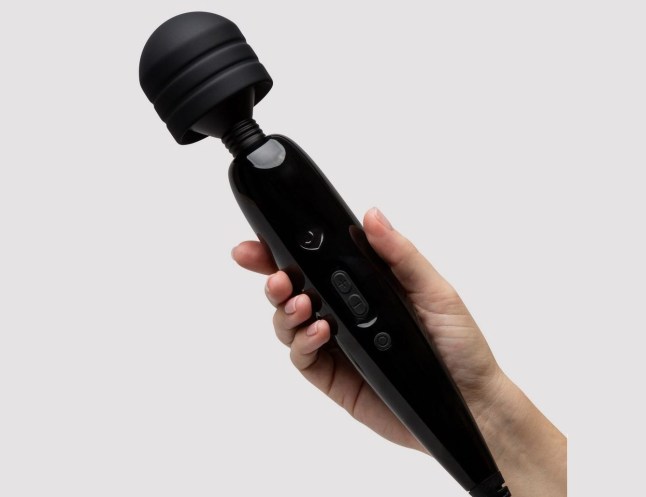
Lovehoney Classic Wand 2.0 Extra Powerful Multispeed Massage Vibrator
The Lovehoney Classic Wand 2.0 Extra Powerful Multispeed Massage Vibrator delivers intense, mains-powered vibrations for ultimate solo or partner play. Its improved ergonomic design with a textured handle gives extra grip and control, while the soft-touch silicone head follows the contours of your body to target your sweet spots with precision. A simple three-button control pad lets you move effortlessly through 12 vibration speeds, and being mains powered means you never have to worry about recharging or replacing batteries.
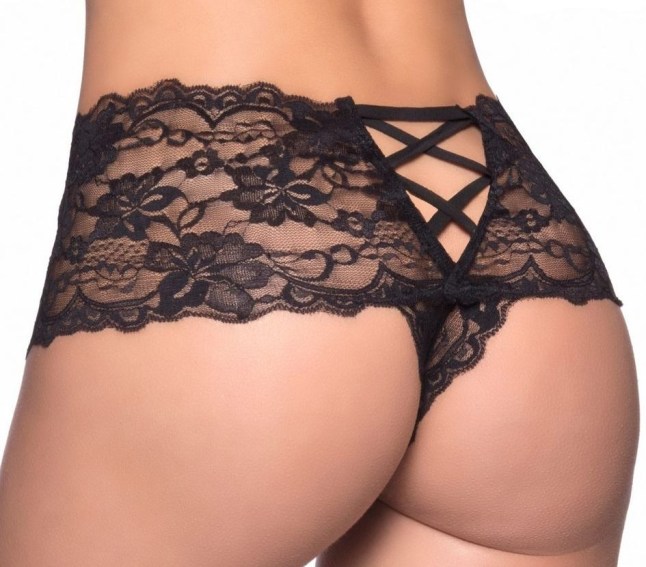
Oh La La Cheri Lace Crotchless Knickers
The Oh La La Cheri Lace Crotchless Knickers are flirty, sexy, and undeniably feminine, with delicate floral lace and an elasticated corset-style back. The low-rise cut flatters your figure, while high-cut legs create the illusion of longer, leaner legs. Perfect for wearing under everyday clothes, they give a sensational reveal whenever the mood strikes.
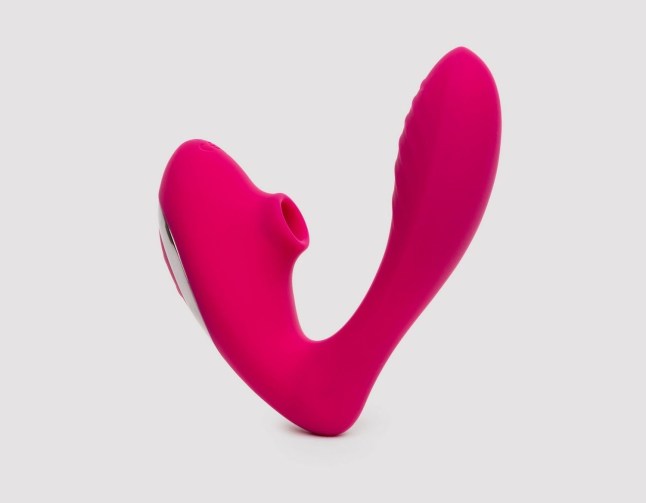
Lovehoney Indulge G-Spot and Clitoral Suction Stimulator
If intense pleasure is your thing, the Lovehoney Indulge G-Spot and Clitoral Suction Stimulator is for you. Pleasure Air Technology delivers focused clitoral stimulation, while the G-spot motor provides deep, toe-curling sensations – targeting multiple pleasure points for blended orgasms. With 10 clitoral suction speeds and 3 G-spot speeds plus 7 patterns, you can easily customise your experience. It's also USB rechargeable for hassle-free power whenever you want.
The filthiest nights start with a little saving, right?
Follow Metro across our social channels, on Facebook, Twitter and Instagram
Share your views in the comments below
11 Nov, 2025 | Admin | No Comments
Shoppers say this serum lifts and firms double chins in weeks – and it’s 30% off
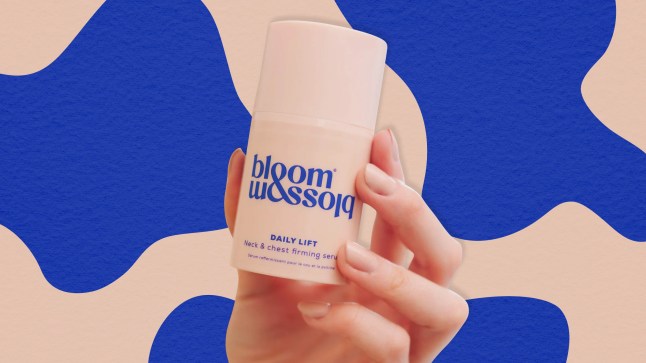
Metro journalists select and curate the products that feature on our site. If you make a purchase via links on this page we will earn commission – learn more
The season of indulgence is all fun and games until you catch sight of your multiple chins in an unflattering shop window.
But fear not – customers say this serum can smooth out your neckline in weeks, and it’s now over 30% off at Boots.
Too good to be true? It appears not…
The Bloom & Blossom Daily Lift Neck & Chest Firming Serum is down from £32 to just £21.33, and it’s set to transform crepey skin and stubborn wrinkles.
A powerhouse product for aging skin, this serum has been packed with a cocktail of skin-loving ingredients to help lift, firm, and smooth the delicate skin on your neck and chest.
Co-enzyme Q10 works to support collagen production and reduce the appearance of fine lines and wrinkles, while quince-hydrogel boosts elasticity and helps maintain the skin’s natural lipid barrier.
Angelica root oil adds the finishing touch, strengthening and firming for a visibly lifted and more youthful look.
Better still, it’s vegan, cruelty-free and perfect for all skin types. For best results, the brand suggests massaging a couple of pumps into your neck and chest area twice a day, using upward motions.
And yes, users absolutely love the stuff, saying it ‘really works’ and adding that it leaves skin ‘plumped and youthful’.
‘Wow!’ Raved one impressed shopper. ‘What can I say, in my opinion the Daily Lift Serum 100% delivered.
‘It is the first time I have used a serum formulated for the neck and chest area, so I was really excited and intrigued to try out the product.
‘The Daily Lift is a beautiful serum which has really helped tone my neck. I have a visible horizontal crease under my chin, and in under two weeks I can already see a difference, the crease is definitely fading, my skin on both my neck and chest is firmer.’
Another added: ‘It really works. I bought this three weeks ago and I have certainly noticed the difference.
‘I’m not usually one for reviews, but I read them, and this product stood out with 5 stars. I have definitely seen a reduction in my wobbly under chin and have a much smoother neckline. I’m really happy with this product and do recommend.’
Looks like we’ll be heading out to Boots on our lunch break!
Follow Metro across our social channels, on Facebook, Twitter and Instagram
Share your views in the comments below
11 Nov, 2025 | Admin | No Comments
Sandringham’s ‘Bachelor Cottage’ with ‘unlucky’ reputation Andrew Mountbatten Windsor could move into

Everything you need to know about York Cottage, the ‘bachelor cottage’ with an ‘unlucky’ reputation on the Sandringham estate that Andrew Mountbatten Windsor, formerly known as Prince Andrew, might move into.
11 Nov, 2025 | Admin | No Comments
I woke up after my wedding and couldn’t see — I’m only 28 but I feel 90
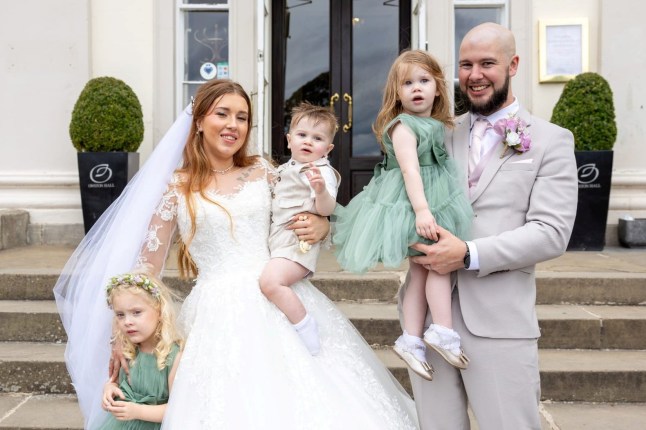

It was just five days after Chelsea Shields had the wedding of her dreams that things went wrong.
‘I woke up unable to see out of my right eye — it was complete darkness’ says the 28-year-old from Doncaster. ‘I was panicking. I thought, “What if I’m going blind? What if I’m not going to be able to see my children growing up?”‘
But her eyesight was just the start of a period of rapidly-declining health since tying the knot with husband Connor, 34, in August; a whole host of debilitating symptoms she now knows were caused by functional neurological disorder (FND).
‘I’ve always had issues with muscle weakness and pains. I’ve had back-and-forth visits to GPs and A&E for about 10 years,’ Chelsea explains. ‘But the worst symptoms I’ve experienced came days after my wedding.’
The morning she realised she couldn’t see out of one eye, she was rushed to hospital, where doctors said they thought she had a viral infection and sent her home.
The next day however, things only got worse.

‘I woke up and the other eye had started going blurry,’ Chelsea recalls. ‘I went back to hospital for more tests and scans, and there was no field of vision in the right eye at all, but nobody knew what it was.’
With doctors suspecting MS (Multiple Sclerosis), the mum-of-three was given powerful steroids while she waited for urgent scans – but by then, she was barely able to move.
‘I had a constant dull headache and I couldn’t cope with it,’ she says. ‘My left eye got significantly worse – and then I was in the kitchen making lunch for my children when I got hit with a sudden thunderclap headache.’
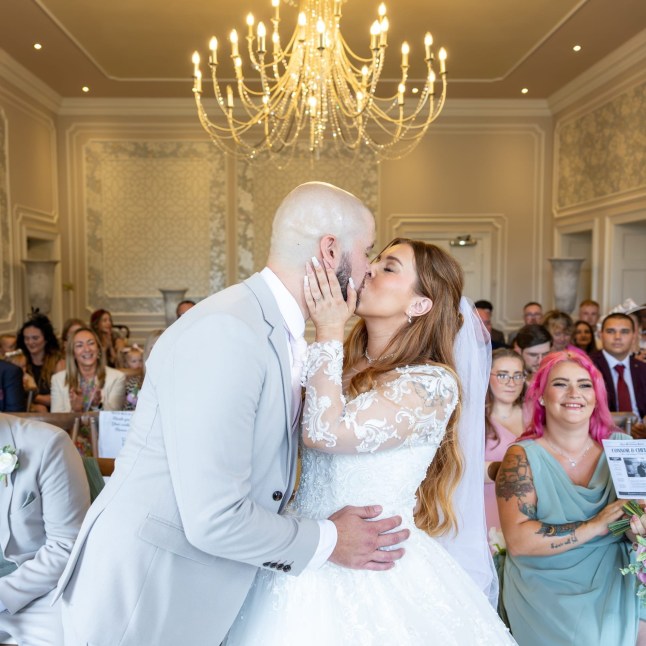
Chelsea ‘dropped to the floor’, getting her five-year-old to pass her the phone so she could call Connor for help, ‘crying out in pain’ as she tried to dial.
By the time the ambulance arrived to take her to hospital, she couldn’t even walk up to it without falling over.
‘I lost the ability to go to the toilet as well, so at 28-years-old, I had to be catheterised,’ says Chelsea. ‘I couldn’t get out of bed, because I’d been put down as a fall risk. I could just feel my whole body starting to give up on me.’
Functional neurological disorder (FND)
The NHS says it’s helpful to think of the brain like a computer, in this case. In someone who has FND, there’s no damage to the hardware, or structure, of the brain. It’s the software, or program running on the computer, that isn’t working properly.
Possible symptoms
- Limb weakness which causes problems walking, heaviness on one side, dropping things, and feeling like your limb isn’t part of you
- Seizures where you experience uncontrolled shaking, suddenly going motionless and unresponsive, or staring without responding to surroundings
- Tremors in the arms and legs
- Dystonia – a muscle spasm where a part of your body becomes stuck in an unusual position
- Gait disorder, where you have a dragging leg, feel unsteady when walking, or make excessive movements when walking
- Facial spasms and tics which look similar to Tourette’s, and jerks and twitches
- Drop attacks where you fall to the ground suddenly while conscious
- Numbness and pins and needles
- Problems with your memory and concentration
- Speech and swallowing difficulties
- Persistent postural perceptual dizziness
- Blurred vision, double vision, sensitivity to light, reduced vision
- Dissociation
Other symptoms include: chronic pain, fatigue, insomnia or hypersomnia, migraines, irritable bowel syndrome, anxiety, panic attacks, depression, PTSD, chronic urinary retention, dysfunctional breathing.
Treatment
Rehabilitation therapy is used to improve the quality of life of FND sufferers, in an attempt to retrain the brain. Some many benefit from this, while others may continue to have symptoms despite treatment.
Source: NHS
It was tough to cope, but after four long weeks without an answer as to what was going on, doctors finally gave her a diagnosis: functional neurological disorder.
This complex condition affects how the brain sends and receives signals to the body, causing a range of symptoms from muscle spasms to memory issues.
Living with Functional neurological disorder (FND)
Chelsea explains: ‘Before I was diagnosed, I’d never heard of FND, but it’s actually more common than people would think.
‘It can be very unpredictable, so it can mean anything from seizures to paralysis, which makes it even harder to get the right help.’
FND can be difficult to diagnose, and has no single ‘cure’, with treatment focusing more on managing symptoms through medication and physiotherapy.

Despite its severity though, Chelsea says the disorder is often dismissed or ‘not taken seriously’.
‘The main symptom for me is brain fog, which is quite bad when you have young children,’ she adds.
‘I have a lot of weakness in my legs, so 99% of the time I walk with a stick or crutches. There are times when I can’t feel my legs and I can’t physically walk.
‘I take about 20 tablets per day and suffer with constant pain. I’ve gone from a fully functional mum of three to feeling like I’m a 90-year-old. Three months ago, I never thought this would be my life.’
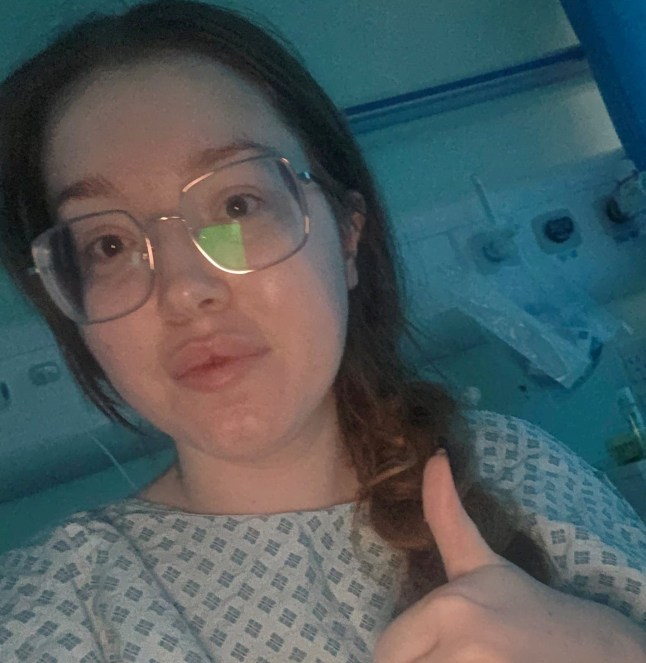
Determined to fight back, Chelsea has launched a Facebook page to vlog her journey and shine a light on FND – hoping her story will resonate with others battling the same illness.
She plans to regularly post videos documenting her daily reality with the condition, between the rigorous medication routines and how it impacts her mental health.
‘I can’t work, so I’m putting all my time into raising awareness,’ Chelsea adds.
‘I want to share everything, because I know it will help people.’
Do you have a story to share?
Get in touch by emailing MetroLifestyleTeam@Metro.co.uk.
11 Nov, 2025 | Admin | No Comments
I’m a shopping expert and these are the best Singles’ Day 2025 sales to shop today
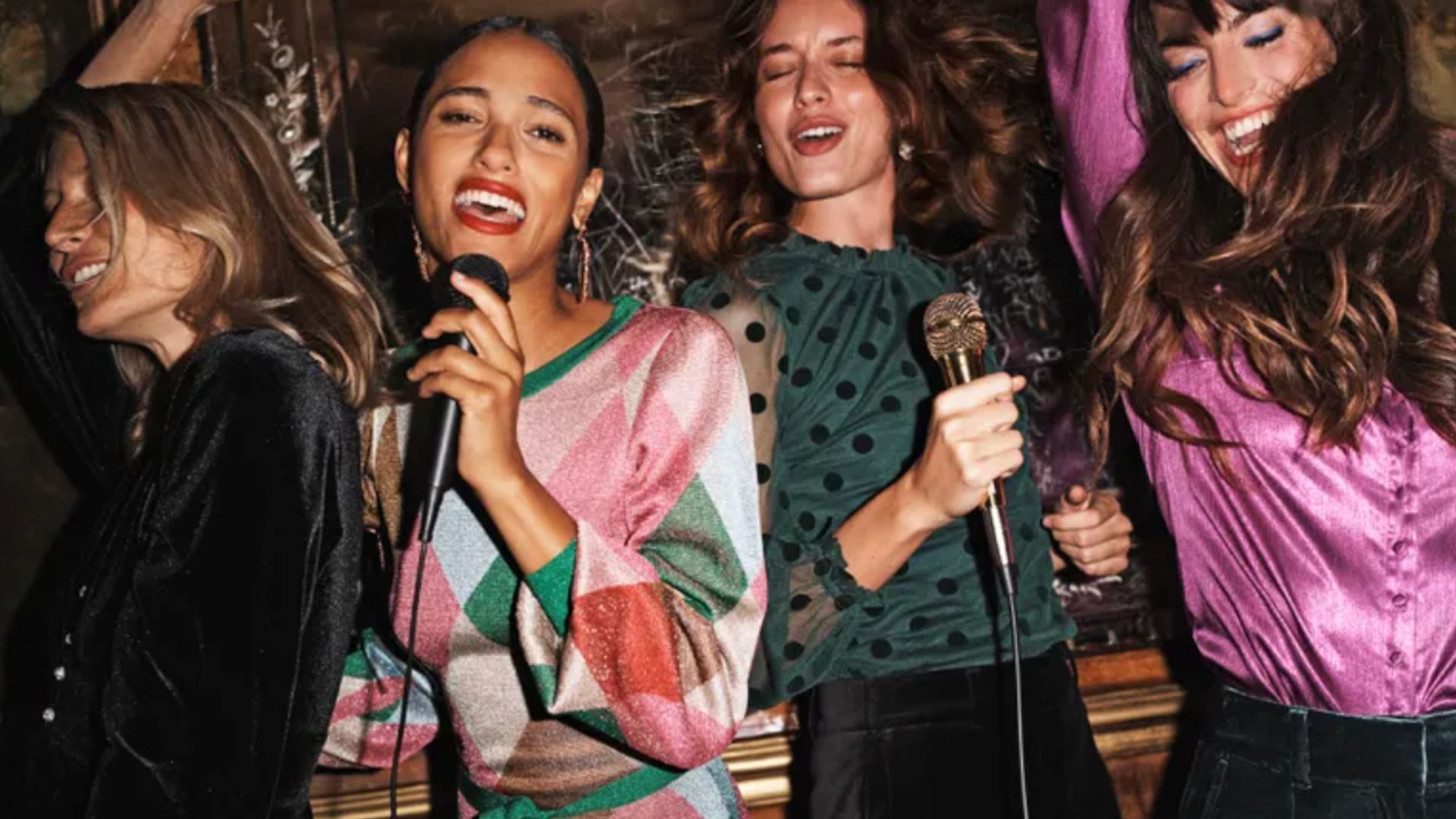
Shop Singles’ Day, plus find out why we celebrate Singles’ Day? What you need to know about Singles’ Day sales – deals & discount codes at Boden, H&M, ASOS & more
11 Nov, 2025 | Admin | No Comments
Solemn Princess Kate looks windswept in fringed dress and largest hat of 2025
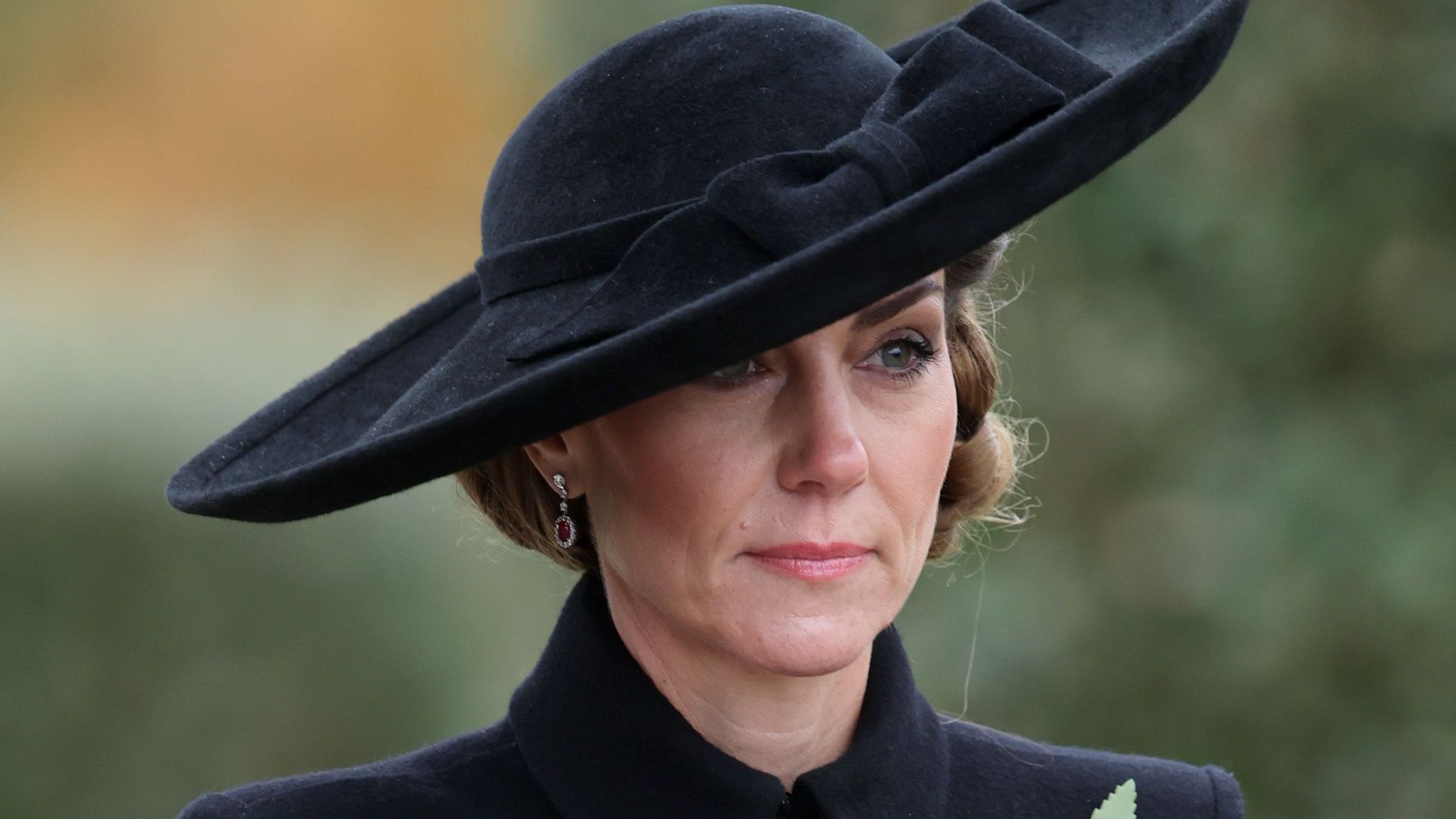
The Princess of Wales looked solemn in black as she visited the National Memorial Arboretum in Staffordshire, leading the nation in commemorating Armistice Day with a Service of Remembrance on the Armed Forces Memorial.
11 Nov, 2025 | Admin | No Comments
Public toilet injectables, botulism, and necrosis — the ‘wild west’ of the ‘Botox boom’
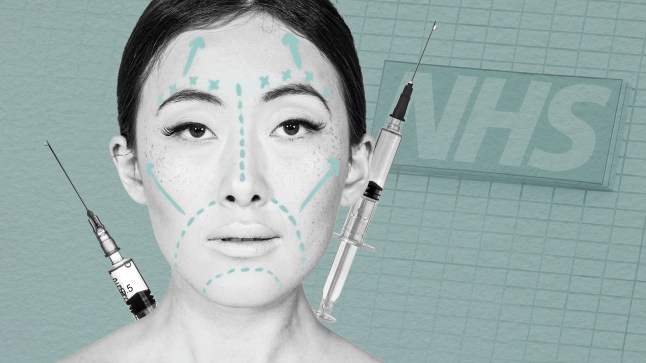

When 36-year-old mum-of-three Kaylie Bailey paid a beautician £75 to get three ‘Botox’ injections, she never thought it would stop her breathing.
Within days of the anti-wrinkle treatment, which was administered in a salon, she could barely see, so headed to Sunderland Royal Hospital.
After receiving a diagnosis of ptosis, also known as blepharoptosis or drooping eyelid, she was sent home, with doctors telling her it was likely due to her injections but to visit her GP if she noticed any further changes.
When Kaylie’s condition worsened over the next 48 hours however, she was rushed back to hospital and diagnosed with botulism, a rare, life-threatening condition caused by bacteria that attacks the nervous system – and if left untreated, can lead to paralysis and respiratory failure.
This is exactly what happened to Kaylie, who stopped breathing and had to be resuscitated, before spending three days in the ICU where she was treated with an anti-toxin.
It turns out she’d been injected with Toxpia, an illegal substance similar to, but not the same as, botulinum toxin (commonly referred to as the brand name Botox, although other brands are available, including Vistabel, Dysport, Bocouture, and Azzalure), which is widely used.
‘I remember lying on the bed thinking “I’m dying here and I don’t want to”,’ she told the BBC.
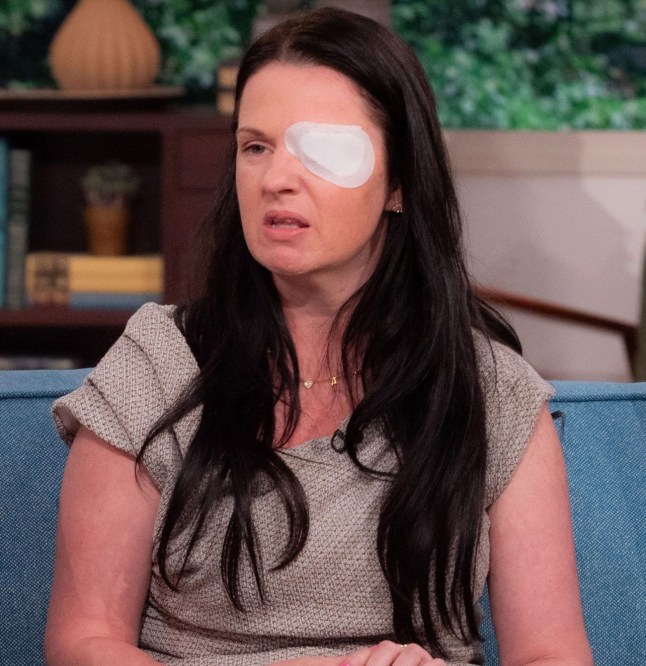
Kaylie is one of 41 confirmed cases of botulinum toxin-related botulism between June 4 and August 6, 2025, according to the UK Health Security Agency, sparking warnings over ‘dangerous, unlicensed products’.
In response to this growing issue, the Harley Street Skin Clinic is now demanding urgent government action to ensure only qualified injectors can perform aesthetic treatments.
It comes after the Chartered Institute of Environmental Health revealed 68% of cosmetic injections are being administered by someone other than a doctor.
In the UK there are currently no legal training requirements for beauty therapists and aesthetic practitioners injecting botulinum toxin or dermal fillers.
Chair of the Women and Equalities Committee, MP Caroline Nokes, dubbed the industry a ‘wild west’ in a Commons speech in August calling for increased licensing and regulation, adding: ‘Anybody can do anything to anyone.’
This absurdity must end
Quote Quote
Sophie Cooper, managing director of Harley Street Skin, welcomes this, saying in an open letter: ‘Injectables like Botox and dermal fillers are prescription-only drugs for good reason.
‘They can cause blindness, necrosis, sepsis, and systemic illness. When injected by a trained doctor, these risks are managed. When injected by someone with no medical training, they are catastrophic.
‘A doctor studies anatomy for years. A beautician can take a weekend course and start injecting the public.’
So much about aesthetic treatments are policed, from tattoo ink to sunbeds. As Sophie highlights, even paracetamol sales are restricted, but the same doesn’t yet apply for cosmetic injectibles.
She adds: ‘Today anyone, regardless of training, can inject powerful drugs into your face. When it goes wrong, the NHS foots the bill, and the patient potentially pays with their life.
‘This absurdity must end.’
What is iatrogenic botulism?
Botulism is a rare but life-threatening condition caused by toxins produced by Clostridium botulinum bacteria which attacks the nerves, brain and spinal cord.
Most people make a full recovery, but if it’s not treated quickly, it can lead to paralysis. In some cases, this can then spread to the muscles that control our breathing, which is fatal in 5% to 10% of cases.
Symptoms:
- drooping eyelids
- blurred or double vision
- facial muscle weakness
- difficulty swallowing (dysphagia)
- slurred speech
- breathing difficulties
Depending on the exact type of botulism, some people initially have symptoms such as feeling sick, being sick (vomiting), stomach cramps, diarrhoea or constipation.
Treatment:
Botulism must be treated in hospital by neutralising toxins with an injection of antitoxin, and supporting bodily functions like breathing until you can recover.
Source: NHS

With an estimated 900,000 anti-wrinkle injections happening each year in the UK, there’s plenty of opportunity for things to go wrong. In 2024, the British College of Aesthetic Medicine recorded 3,547 cases of complications from non-medical injectors, 60% of which were traced back to beauticians.
And while issues typically range from soft tissue infections to necrosis and scarring, they can be deadly, as evidenced by the death of mum-of-five Alice Webb in September 2024.
The 33-year-old is thought to have died as a result of a botched non-surgical Brazilian butt lift (BBL), where dermal filler is injected into the buttocks.
Since 2022, Save Face (a platform that connects patients with accredited practitioners) has received more than 300 reports of people who experienced disastrous near-death experiences as a result of the so-called ‘liquid’ BBL and breast augmentation procedures, carried out using huge quantities of dermal filler.
These procedures are so dangerous that 99% of the 2,000 medically trained professionals surveyed by the organisation refuse to offer it because of the significant risks.
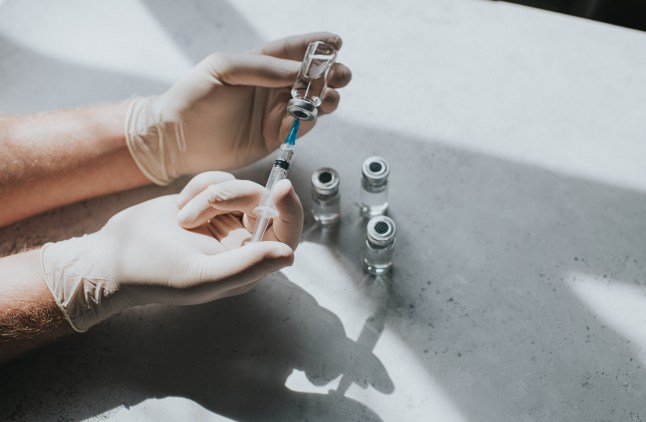
Following Alice’s passing, a Department of Health and Social Care spokesperson said: ‘We are exploring options around regulatory oversight of the non-surgical cosmetics sector and will provide an update in due course.’
But intervention is needed sooner rather than later, given that filler and anti-wrinkle treatments being injected in the likes of pop-up shops, hotel rooms and even public toilets.
Not to mention, just 42% of patients say a qualified prescriber was present during their consultation, while nearly one in five patients surveyed as part of an Anglia Ruskin University study say they weren’t informed of the risks.
Alarmingly, 9% of those who have had these injections weren’t even given a consent form.
So, if you’re considering a tweakment or two, do your research and only get an injection with a registered medical professional. You’re far better off being safe, than being sorry.
Choosing your practitioner to administer your Botox
Given all we’ve just mentioned, it’s vital you select a medically trained professional to administer your Botox and filler.
For peace of mind, you should go to the Save Face website, which is home to accredited practitioners who have had to pass a 116 point assessment process.
The government approved register means your practitioner will be:
- A registered doctor, nurse, pharmacist or dentist
- Trained in each treatment listed on their Save Face profile
- Fully insured
- Using licensed suppliers for their products and equipment
- Working in a clinic that meets standards for safety, hygiene and quality
Do you have a story to share?
Get in touch by emailing MetroLifestyleTeam@Metro.co.uk.
11 Nov, 2025 | Admin | No Comments
The Repair Shop’s Will Kirk reveals change at family home in Surrey

The Repair Shop’s Will Kirk has opened up about his home renovations in the Surrey Hills, after moving to Farnham.

